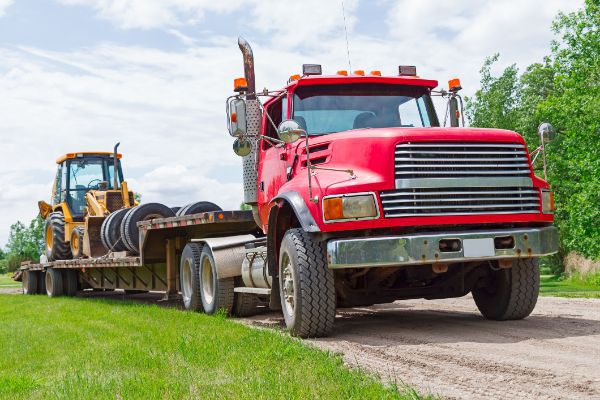
Cargo control can be a menace for many while flatbed trucking. Issues like road vibration, weather, and load shifts can cause significant havoc.
However, preventing these issues at the loading site can cause significant delays, bigger muscles, strained backs, and considerably more compensation. These protective measures often include huge tarps to cover the load. Flatbed trucking requires a lot more from the driver than just hooking up and driving.
The cargo on the back of that flatbed is the driver’s responsibility until it is safely delivered to its destination. Therefore, they must choose the right equipment and use it correctly to insulate their load from the hazards of the long haul.
What’s more, there are extreme hazards of hefty fines and possible jail time for violating the FMCSA regulations concerning cargo transport. Even worse, a cargo shift could cause your load to spill onto the highway, leaving you or your fleet liable to civil suit.
Flatbed Trucking & Road Vibration
Flatbed trucking requires the driver to protect their load from the rigors of road vibration. When you’re riding around town in your car, the sounds of groceries rattling around and bottles clacking in the back might not be a substantial concern because of the short drive home.
However, over the hundreds of miles of uneven highways, manufactured speed bumps, unintentional potholes and frost-heaves can rattle even a big truck’s cargo. Use tarps and tie-downs to level and moderate these effects.
Weather Effects on Flatbed Trucking
High-quality tarps and tie-downs can also be the answer to protect cargo against driving rain, snow, sleet, hail, wind, and ice. Some cargo might even get damaged by exposure to direct sunlight.
At 55 mph, the weather can become a significant distractor. A flapping tarp or tie-down is a red-flag to law enforcement. The cargo contained inside a reefer or trailer, even when not correctly secured, are not as apparent as cargo on the back of a flatbed.
Shifting Loads
Blocks, chains, tarps, and tie-downs are a way of life when flatbed trucking. Section 3 of the DMV’s 2019 CA Commercial Driver Handbook.pdf Transporting Cargo Safely, is an excellent source of information to balance and protect your cargo from unexpected shifts.
This section covers inspecting cargo, cargo weights, and balance, securing cargo, and cargo that requires special attention. Using this reference will help ensure you get your load where it needs to go safely in most cases.
Flatbed Trucking & Misdemeanors
However, there are more than 350 misdemeanor crimes defined by the FMCSA regulations. These regulations and their interpretations fill a volume of more than 1000 pages., For instance, check out Section 397, Hazardous Materials; Driving and Parking Rules.
Also, CA Vehicle Code (CVC) 31602 (a-c), Transportation of Explosives, makes it a misdemeanor to transport explosives without the correct license and endorsement, the right map issued by the CHP, or to make an unauthorized stop.
Your best defense is a knowledgeable traffic attorney. When stopped, exercise your right to remain silent and wait to have an attorney present to answer questions by law enforcement or officers of the court. A misdemeanor can end your trucking career and “…anything you say can and will be used against you...”
Traffic Ticket Attorneys for CDL Holders in Riverside, CA
When you get traffic violations while flatbed trucking, call Bigger & Harman, (661) 349-9300, to resolve your tickets. We can help resolve these problems for you. The call is free, and you are under no obligation to continue until we agree on the steps to take.
Se habla Español (661) 349-9755.
Send us an email, attorney@biggerharmanlaw.com.
References:
The 2019 CA Commercial Driver Handbook.pdf
CVC 31602 (a-c), Transportation of Explosives
CVC 31600-31620, Transportation of Explosives
